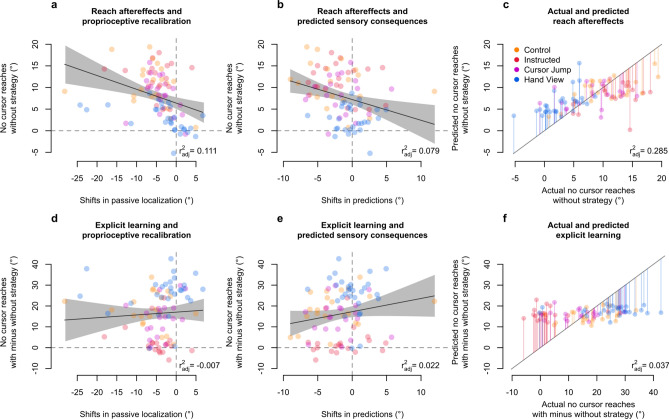Figure 7.
Contributions of afferent and efferent-based hand localization changes to implicit aftereffects and explicit learning. Relationships of afferent and efferent-based changes in hand location estimates with reach deviations when no visual feedback of the cursor is presented, while either excluding any strategies used during adaptation training (implicit aftereffects; a–b), or taking the difference of including and excluding such strategies (explicit learning, d–e). Individual data points from all participants are colour-coded according to their respective groups. Solid line corresponds to a regression line, while the grey shaded region corresponds to 95% confidence intervals. We then validate the multiple regression model using both shifts in afferent and efferent-based hand localization as predictors, and show the predicted values for reach aftereffects plotted over observed values for reach aftereffects (c), as well as the predicted values for explicit learning plotted over observed values for explicit learning (f). The diagonal represents perfect prediction. Individual data points are colour-coded according to group, and lines represent residual errors.

